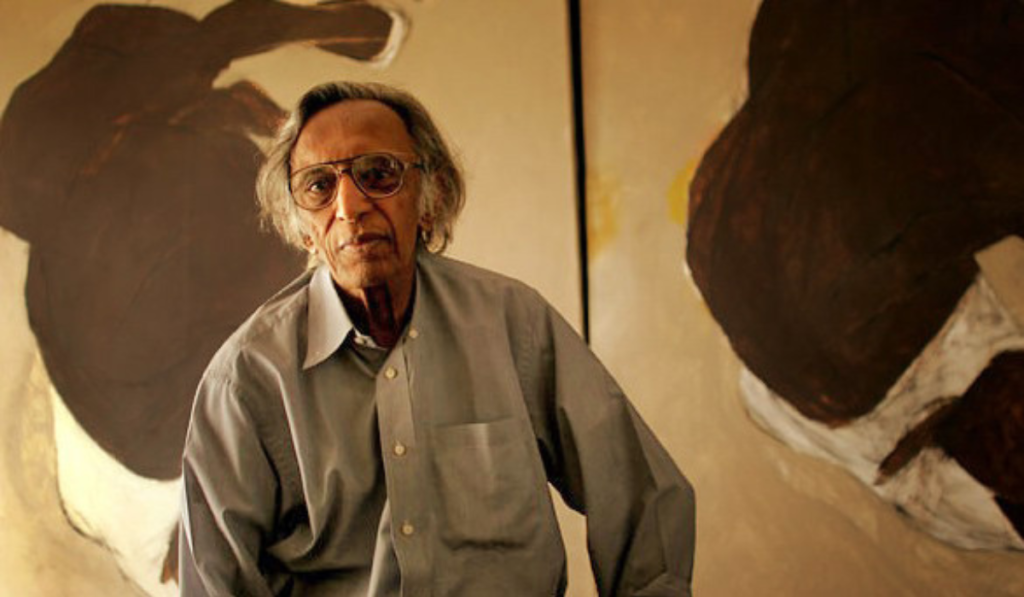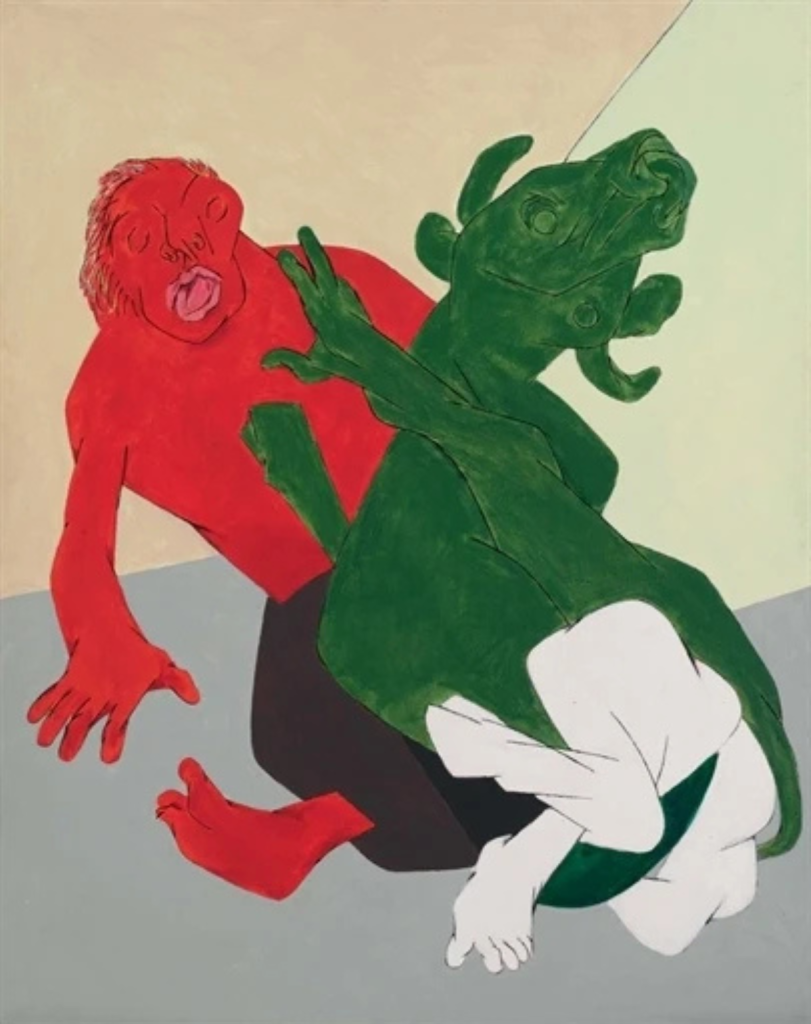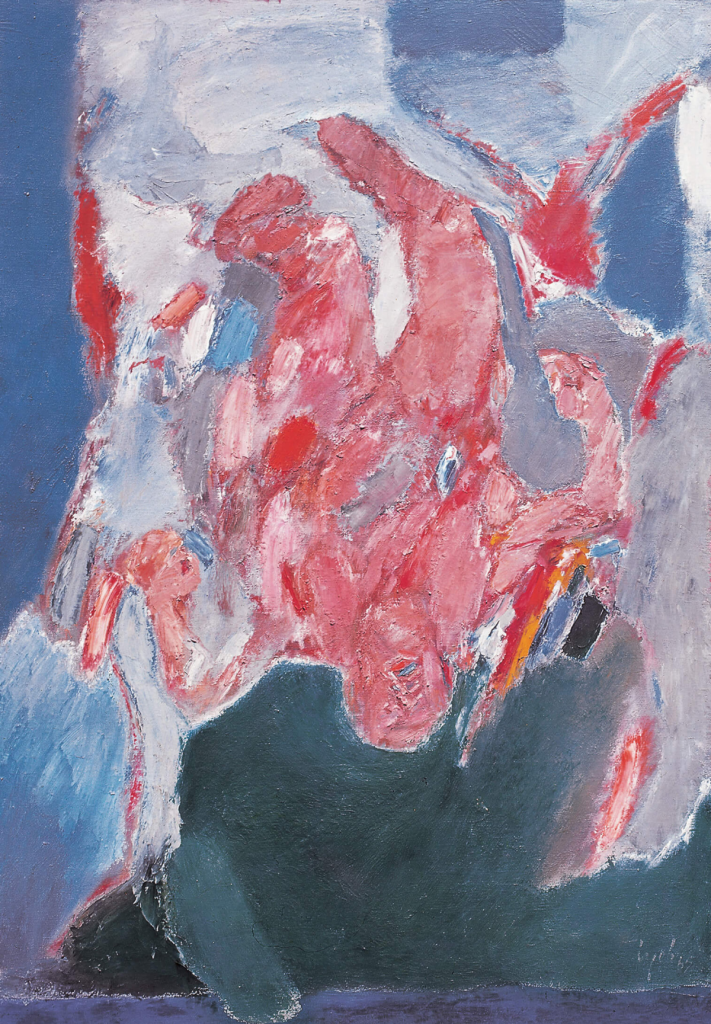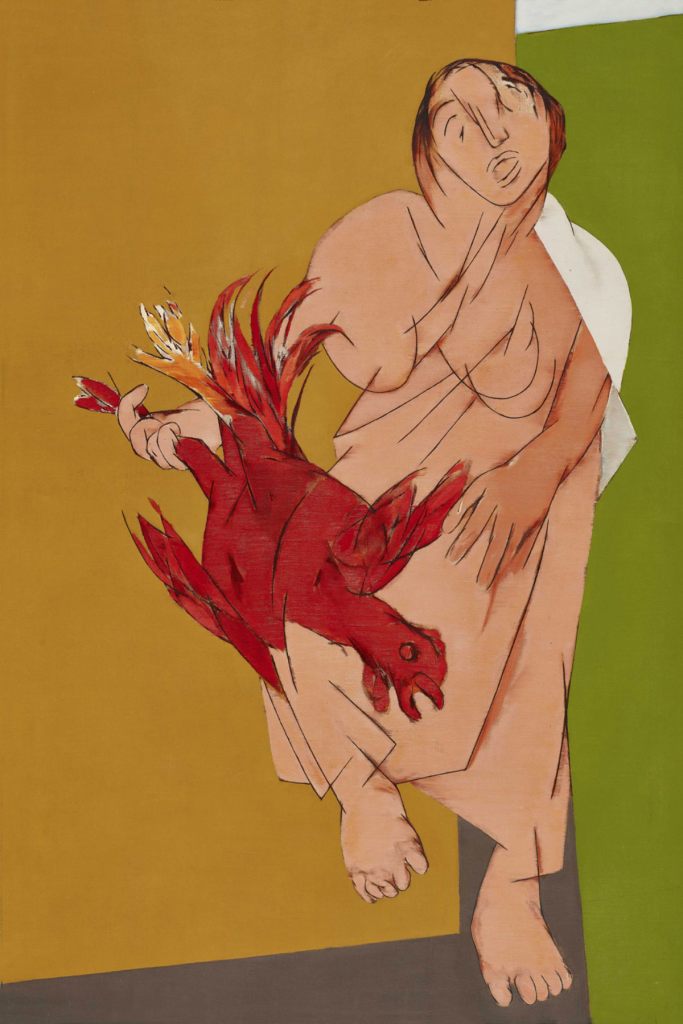When you are young, you try to understand the world. As you grow old, you try to understand yourself. Your work then becomes the essence of these efforts.
-Tyeb Mehta
The man who never made a self-portrait yearns to know himself. It is not the image of the body, the features of the face that is the self in the ovre of Tyeb Mehta paintings, but the formless self, scattered across the divided plains of vibrant colour.
Tyeb Mehta Paintings and Introspective Violence
Tyeb Mehta’s childhood was filled with partition violence. Born in 1925, his artistic journey began in the mid-20th century. He recalls the events of partition as definitive in his practice. He goes back to them in the process of finding the self.

The man in the picture seems calm, with the eyes sitting quietly behind the spectacles. The lean, bony figure, resting and watchful. He visualises history with the self, through the expression and symbolism of art. This article explores some of his most famous paintings with their symbolic repertoire to trace history through metaphoric contemplation but also to know, or understand the artist’s self
Exploring the Symbols of Tyeb Mehta Paintings
As a pioneer in Indian Abstract art, Tyeb Mehta created striking visuals to portray the violence that he witnessed in symbolic ways. His abstraction has given dialogues to pursue within Indian Art History. His legacy of moving away from traditional techniques to a relatively experimental style puts him among the leading contemporary Indian Artists.

Image Courtesy- MutualArt
Tyeb Mehta and Mahishasura
Amongst the notable artworks in Tyeb Mehta’s portfolio is the iconic “Mahishasura”. In this painting, he reimagines the mythological figure of Mahishasura, depicting the battle between good and evil with striking intensity.
The figure of the bull contrasts with the daunting red figure, presumably of the demon. The morphing forms are conjoined at the bottom, emerging from and through one another. Such Tyeb Mehta paintings explore the duality of violence through the symbol of Mahishasur, who can transform into a man to deceive.
Hints of Partition in Tyeb Mehta Paintings
The Partition of British India, into Pakistan and India is a theme explored diligently by contemporary Indian artists. The two countries emerged from one before a line of separation was drawn. The Mahishasur painting with its bold lines and demarcating colours is reminiscent of the historical event itself.

Image courtesy- Vadehra Art Gallery
The falling figures are another recurring motif in the Tyeb Mehta Paintings. In the years of his expressionist style, he depicts the angst in people of a tumultuous country with a fall. Suggestive of the fallen angels, a symbol of Christian as well as Western sensibilities, finds itself as a symbol of suffering in Post-Independence India.

Image courtesy- ArtDependence
Conclusion
As we remember Tyeb Mehta we are reminded of his incredible impact on the art world. Even with these few Tyeb Mehta Paintings, we are able to grasp the inner dialogue that the artist allows himself to have. His expression in art continues to inspire and provoke thought and to look closely at the two-sided coin of violence and introspect.
Image Courtesy – DAG
Contributor





